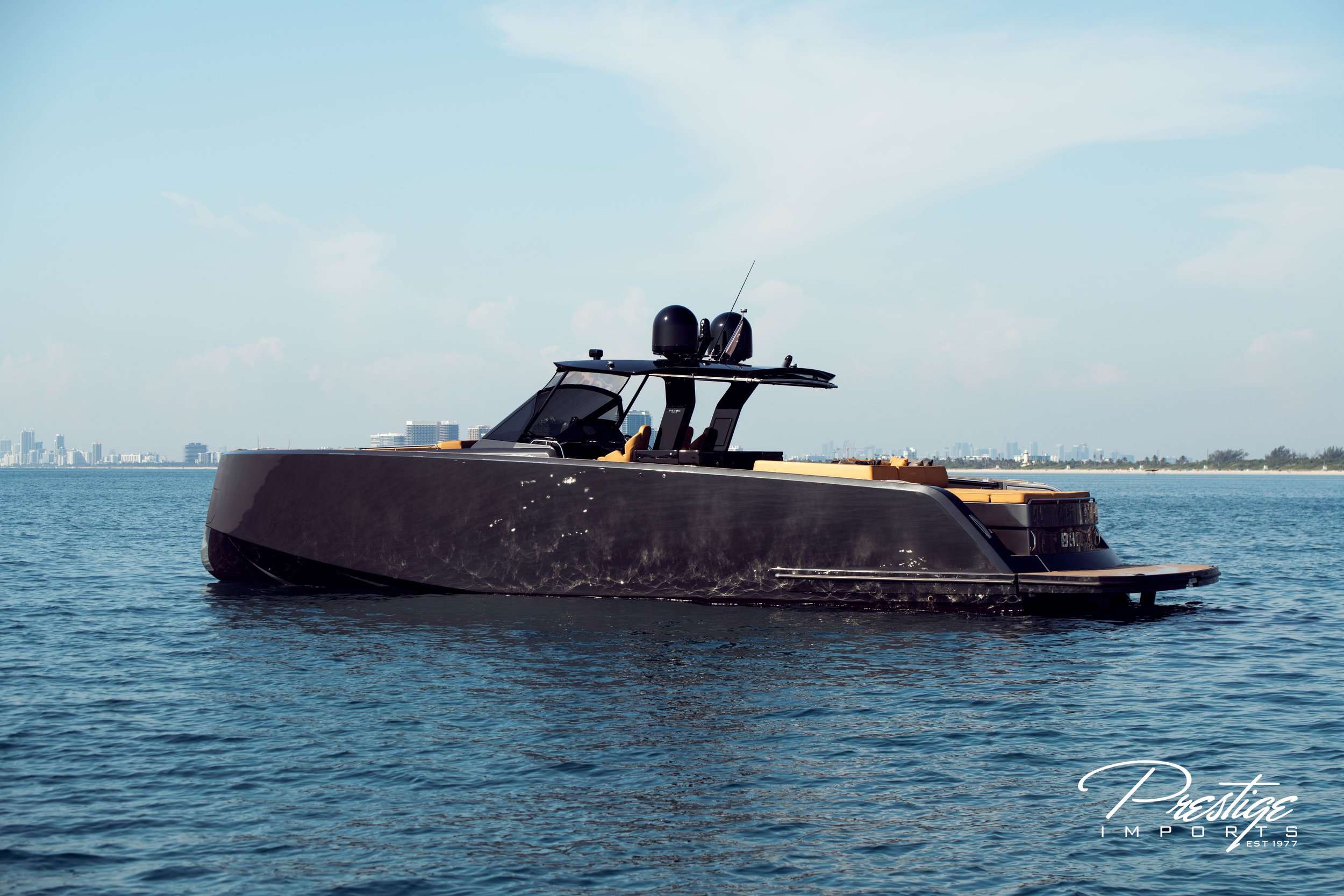How To Budget Year 1 of Yacht Ownership
Propelled by two IPS drives, the Pardo 50 is quite fuel efficient. That’ll certainly benefit your annual running cost.
DON’T JUST ASSUME ANNUAL COST AT 10% OF PURCHASE PRICE. DO THE MATH.
This topic was requested after a recent blog discussed Improper Budgeting as 1 of 5 popular mistakes when buying a yacht.
6.7.24 - What is the most important element of buying a boat? Cost! But don’t just get caught up in the purchase price, its equally as important to factor in your year one running cost. Year one is when surprises pop up for the ill prepared. Annual running cost is commonly assumed at 10% of your purchase price, but is that the right or wrong way to calculate your yearly burn?
Trusting a 10% annual burn is like trusting Google Search for the cost of your kid’s private school tuition. You’re left with a broad idea, but you shouldn’t make a financial commitment based on those search results. I consider the 10% strategy to be the wrong way to estimate your expenses. A more tailored budget starts with the yacht size and your frequency of use, factoring your regional economy, whether you’re proactive or reactive, your choice from a variety of management options, and even whether you’re in fresh or salt water. With a good understanding of your boating style and surroundings, an accurate estimate is easier to come by.
5 Factors to a More Accurate Annual Running Cost Estimate
I’m no math major, but I know it’s impossible to count on the 10% costing concept broadly across all ownership scenarios. Here are five factors to consider when contriving your annual cost estimate:
1 - Fresh Water vs. Salt Water
This one’s simple. If you’re in salt water, your maintenance is more expensive. In fresh water? Cheaper. Why? The salt in water has corrosive tendencies. It’ll break down a variety of materials over time, and when mixed with electricity, can eat away at metals. These actions, while manageable, will add to your maintenance bill. Things like anti-fowling paint, zincs and submerged metals will need annual or bi-annual care. Your soft goods will likely need replacement sooner. If you’re cruising in fresh water, these factors are non-starters. Simply put, fresh water is a huge cost benefit.
2 - Frequency of Use
Are you firing up the engines once a month, or running full throttle four times a week? A lower use frequency will burn less fuel and cause less wear and tear, but you’ll still need to keep up with annual services to prevent surprises. Costly surprises are most common in lightly (almost sporadically used) vessels. If you’re planning to use your boat frequently and year-round, you may factor in two annual services for engines, generators, A/C’s, and the like.
3 - Local Economy
If you’re docked up in Miami, your costs will be much higher than in Daytona. The local economy affects hourly labor costs, docking, insurance rates, full time staff wages and more. You’ll experience cost premiums on everything from major components to the replacement cost of soft goods. Understanding the impact of your local economy can significantly help the accuracy of your annual running cost estimate.
4 - Maintenance Strategy
Full time crew, part-time management, or self-management? Your maintenance strategy will have a large impact on your annual budget. If you choose to take a reactive approach to maintenance, put some money in a “rainy day” fund. Yacht maintenance is all about being ready, because the most expensive yacht is one that’s out of commission. Management companies will quote you based on the length of your vessel, which is a good place to start, but also keep in mind how many components require annual services. The is a good barometer of your vessel’s complexity.
5 - Convenience
Convenience comes with a price. You can reduce your annual costs by docking outside of popular boating areas, which may double as a positively adjustment to your insurance rate as well. On the opposite end of the spectrum, if your boat follows you around to seasonal residences, your annual budget will be higher than usual due to transport costs and seasonal dockage rates.
Creating the Cheat Sheet: The “Instant Yacht Budget”
When James Carter at Wave Marine Group introduced me to a spreadsheet concept to budget a yacht’s yearly expenses, I was obsessed. I’ve spent about two years building upon the original, into something I call the Instant Yacht Budget. I’ll usually build budgets for clients just before we start sending out offers, in order to clearly define the financial responsibility of the offer. The ‘Instant Outlook’ Spreadsheet lists important yacht ownership costs and calculates a monthly cost estimate based on the ownership factors we listed in the prior section.
An example of the Instant Yacht Budget created for a Sunseeker Predator.
The Instant Yacht Budget is an easy way to see your yacht expenses tallied up AND see the variety of expenses you can/will be responsible for.
The line items for Cost are simple:
Captain
First mate
Deck hand
Chief stewardess
Dockage
Storage
Insurance
Financing
A La Carte Washing
Waxing
Bottom Cleaning
Bottom Paint
Professional Management
General Maintenance
Fuel Cost
*Each of these has its own calculation based on market metrics, frequency, size of vessel and purchase price.
Then we factor in possible monthly Revenues:
Estimated Net Charter Revenue
Charter Days
The combination of estimated monthly costs vs. income leaves us with the estimated net monthly running cost. There is no better way to quickly calculate and visualize your exposure before buying a boat than The Instant Outlook. If you’ve seen a better, faster way, let me know.
GET YOUR OWN INSTANT YACHT BUDGET
This process is not saved for only a special sect of clients. Its something I do for any client serious in purchasing.
For your own Instant Yacht Budget, complete the form below and lets answer the most complex question in yacht purchasing: How much will this thing cost?
About the Author
Reed Nicol is a licensed yacht broker with experience in all corners of the marine industry. He’s worked as an executive and sales director in yacht manufacturing and distribution, has started and managed commercial charter operations, and managed notable refits. Read more about Reed’s marine journey, his love of helping 1st time boaters and his entrepreneurial spirit here.
Reed Nicol [Licensed FL Yacht Broker #11926]
201-264-6356 | Reed@RNMarine.com








